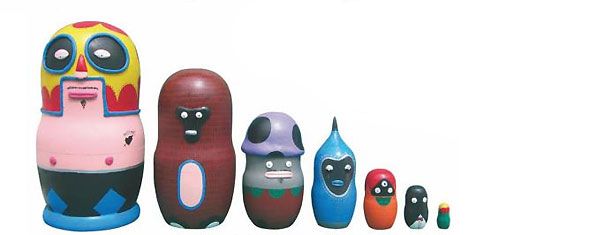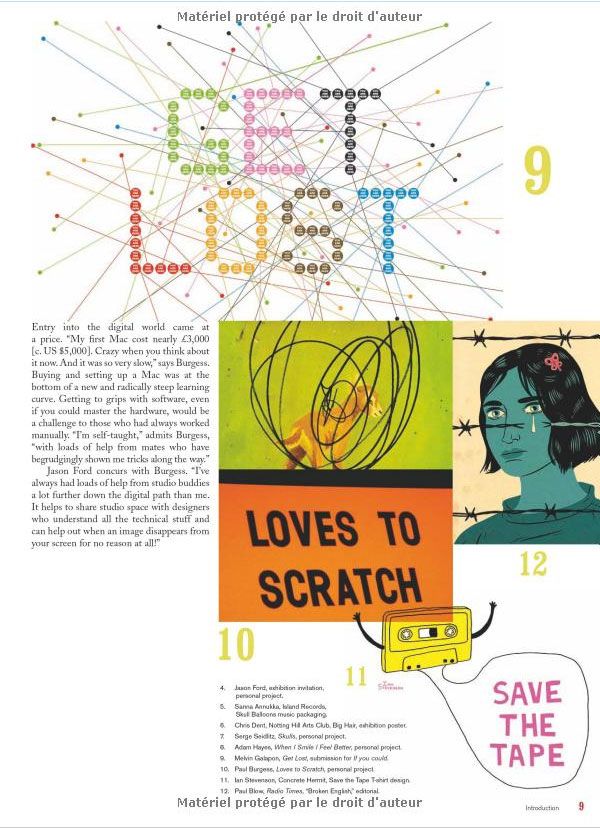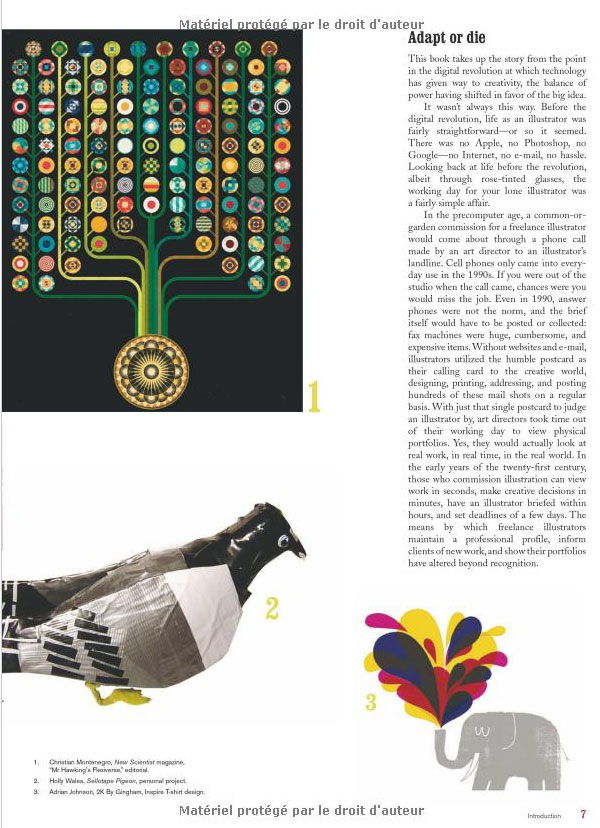Complete Digital Illustration
 Article by Martin Gibson – Twitter: @martingibson @embody3d – 14.02.2012
Article by Martin Gibson – Twitter: @martingibson @embody3d – 14.02.2012
ISBN – 9781592537372
Complete Digital Illustration by Laurel Saville and published by Rockport combines traditional handcraft skills with the latest digital technology to help you create engaging images. But this title is a lot more than some design compilation it includes designer and studio profiles, step by step tutorials and even checklists for successful practices. In a world inundated with logos and simple posters and cheesy newspaper graphics this book aims to recover what seems like the lost art of illustration. The profiles and tutorials are not only action packed, but they are interesting and are written in a very personal manner. Complete Digital Illustration is split up into 2 main sections: Creative Image Making, followed by Commercial Image Making, creative meaning the development of illustrations and commerical image making being more about how to transform this craft into a business. Some of the profiles and topics in these 2 areas include:
Creative Image Making – Ian Wright, Michael Gillette, Jasper Goodall which talk about their influences – Paul Davis, Marlon Deuchars, Shonagh Rae on mixed media and techniques – Anthony Burrill, Brett Ryder, Seijiro Kubo and Paul Burgess on revival, appropriation and reuse – Kam Tang, Spencer Wilson, Laurie Rosenwald on the power of the drawn mark – Joe Magee, McFaul, Josh Gosfield on photo graphic image making
Commercial Image Making – Mr Bingo, Adrian Johnson, Pietari Posti, Natsko Seki on ideas and problem solving – Holly Wales, Asako Masunouchi, Oliver Hydes, Matt Wingfield Studio on the digit versus the digital – Sanna Annukka, Sasha Barr, Serge Seidlitz, Marine on where fashion and music collide – Jon Burgerman, Simon Oxley, Jeremyville on the art of character design – Jim Stoten, Emily Alston, Craig Atkinson on commercial art and personal projects
The candidates who have contributed to this book are all top notch working professionals. Amongst them there are a good mix of both western and eastern artists and this gives the book a great global mix as the different artists bring unique philosophies to their craft. All the portfolio items and examples, which are well presented and captioned, also reflect this global reach of professionals. These graphic illustrations use a wide variety of traditional and digital mediums to communicate to their audience. There is a huge amount of diversity, these interviews don’t get boring for a second, although I do recommend pacing yourself through the title to get the most value from it. The topics covered are interesting despite their quirkiness at times. Unlike many other books, the topics are somewhat advanced but still approachable for anyone including students to grasp.
Some of the tutorials include:
- Insider Tips
- Idea Generation
- Surviving a Placement
- Keeping Clients Happy
- Negotiating Fees
- Winning Awards
The advice given in the tutorials is actually broken down into even smaller tips. This tips are awesome to say the least. They are extremely practical and very correct and informative. This is good advice given by professionals who have proved it in the field. They don’t hold back, glorify or gloss over anything. These few tips are worth the price of the book alone.
Complete Digital Illustration is evidence that you shouldn’t judge a book by its cover, as this cover certainly isn’t pretty or elegant. The book is a greta all rounder that gives you a good mix of practical advice, industry insight through interviews and inspiration from portfolio items. It is by far the best illustration book I have seen to date and highly recommend it for both students and professionals and in particular graphic designers who want to push themselves to the next level. So if you feel like all your design possibilities are dependant on what Adobe offers you in the next CS release, maybe this book will inspire you to open that old pastel, marker or crayon case once again and have fun mixing and matching technologies and mediums together.
[rating:5]





